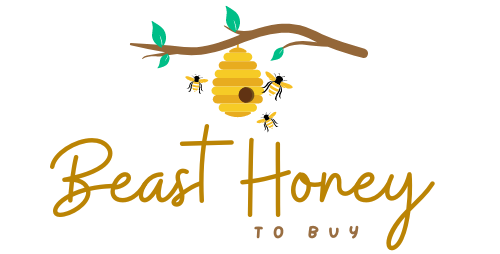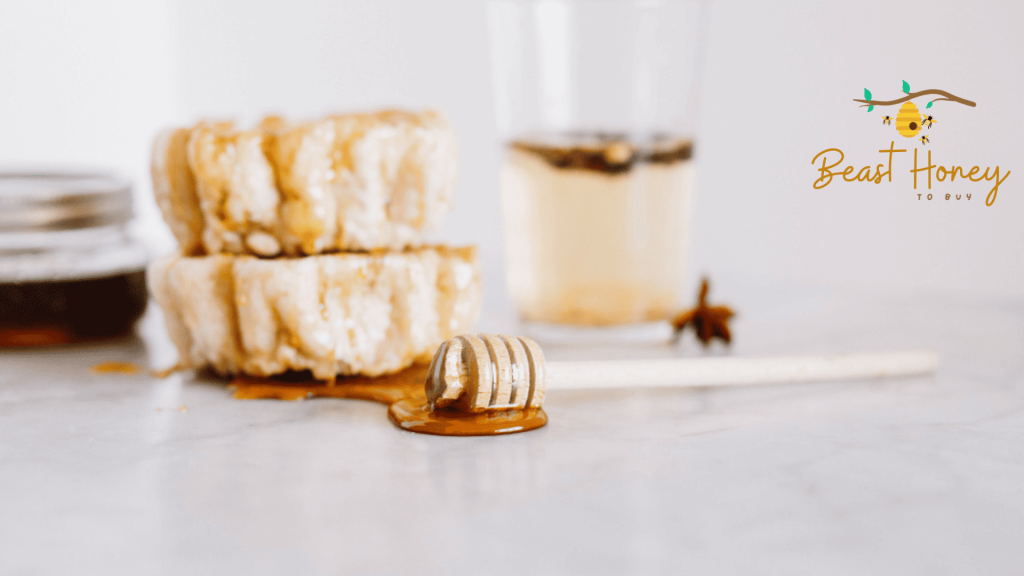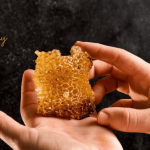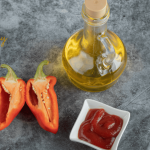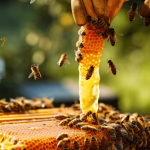Springtime brings flowers, sunshine, and… sneezes. If you suffer from allergies, you’ve probably heard about raw honey. People say local raw honey can help with allergies. But does it really work? In this post, we’ll explore raw honey for allergies. We’ll look at the science, benefits, and how to use it. Let’s find out if local honey is your allergy fix!
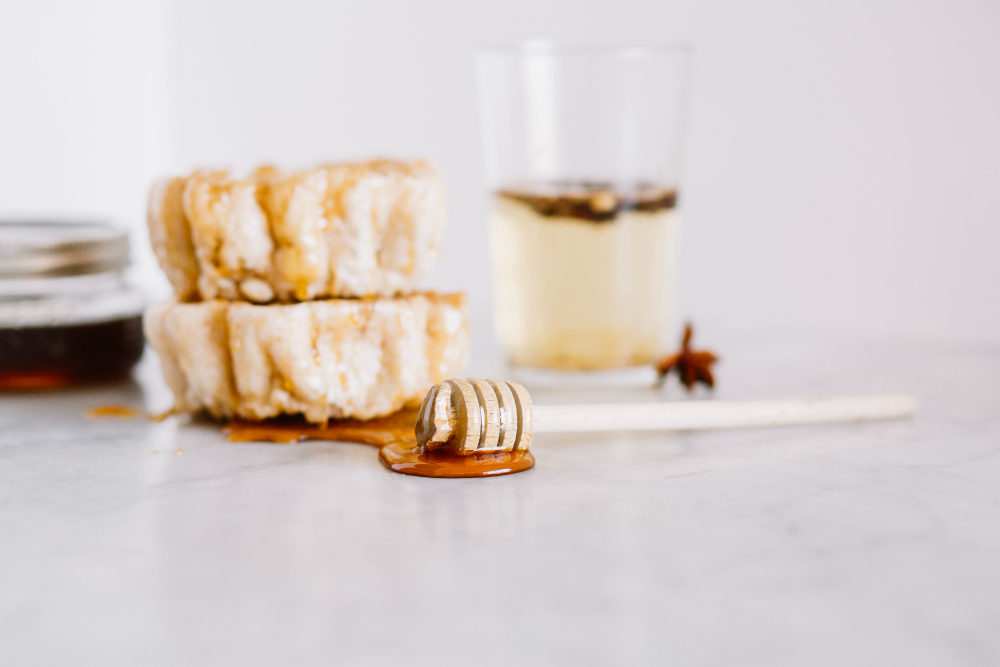
What Is Raw Honey?
Raw honey is honey straight from the beehive. It’s not heated or filtered like store-bought honey. This keeps its natural nutrients, pollen, and enzymes. Local raw honey comes from bees near your home. It contains pollen from plants in your area.
People believe this local pollen is key. They say it helps your body get used to allergens. But is raw honey for allergies a real solution? Let’s dig in.
Why Local Honey for Allergies?
Allergies happen when your body reacts to pollen or dust. You sneeze, itch, or get watery eyes. The idea behind local raw honey is simple. It has tiny bits of local pollen. Eating it might train your immune system. Over time, you could react less to pollen in the air.
It’s like a natural vaccine. But it’s not a quick fix. You need to eat raw honey regularly. Does this theory hold up? Let’s check the science.
The Science Behind Raw Honey for Allergies
Science on raw honey for allergies is mixed. Some studies say it helps. Others aren’t so sure. Here’s what we know:
- Small Studies Show Promise: A 2013 study in Finland tested local honey. People with birch pollen allergies ate honey daily. They had fewer symptoms than those who didn’t. But the study was small.
- Pollen Exposure: Raw honey has tiny amounts of pollen. This might act like allergy shots, which slowly expose you to allergens. But honey’s pollen is less concentrated.
- No Big Proof: Large studies are missing. The American College of Allergy says there’s not enough evidence. Honey might help some people, but it’s not guaranteed.
So, raw honey for allergies could work for some. It’s not a cure, but it’s worth a try.
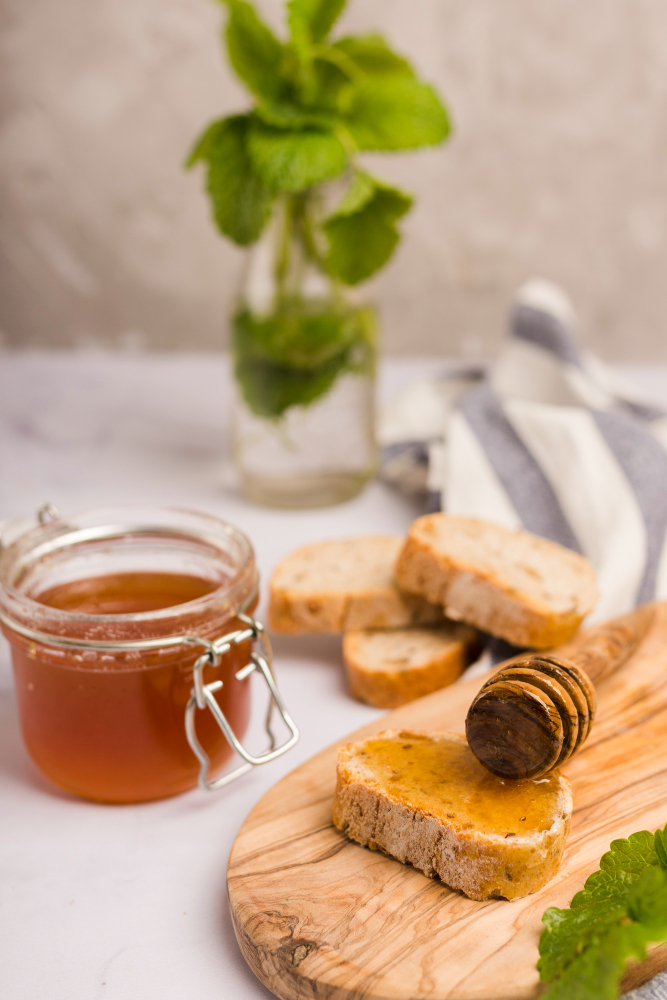
Benefits of Raw Honey Beyond Allergies
Even if raw honey for allergies isn’t a sure thing, it’s still awesome. Raw honey has other perks:
- Natural Sweetener: It’s healthier than sugar. It has a rich, floral taste.
- Antioxidants: Raw honey fights harmful molecules in your body. This boosts health.
- Soothes Throats: It calms coughs and sore throats. Perfect for allergy season.
- Supports Digestion: Enzymes in raw honey help your stomach.
For example, I add raw honey to tea when my throat feels scratchy. It’s soothing and tasty. These benefits make raw honey a great addition, allergies or not.
How to Use Raw Honey for Allergies
Want to try raw honey for allergies? Here’s how to do it right
- Choose Local: Buy honey from bees within 50 miles. Local pollen matches your area’s allergens.
- Go Raw: Pick unfiltered, unheated honey. It keeps the pollen and nutrients.
- Start Small: Eat 1 teaspoon daily. Slowly increase to 1–2 tablespoons.
- Be Consistent: Use it for weeks or months. It’s not a fast fix.
- Mix It Up: Add honey to tea, yogurt, or smoothies. Don’t heat it too much—it kills nutrients.
Example: I stir a teaspoon of local raw honey into my morning oatmeal. It’s sweet and might help my sneezes.
Where to Buy Local Raw Honey
Finding local raw honey is easy. Here are the best places to look:
- Farmers’ Markets: Local beekeepers sell raw honey. Ask where their bees are kept.
- Health Food Stores: Whole Foods or co-ops stock local honey. Check labels for “raw” and “local.”
- Beekeepers: Search “local beekeepers near me.” Many sell directly. You might visit their apiary!
- Online: Sites like LocalHoneyFinder.org connect you to nearby sellers. Prices range from $10–$20 per jar.
Tip: Ask sellers about their honey. Good beekeepers love to share details. This ensures you get real raw honey for allergies.
Top Brands for Raw Honey
If local isn’t an option, try these trusted raw honey brands. They’re high quality and widely available:
- Zach & Zoe Sweet Bee Farm: Their wildflower honey is raw and floral. About $15 for 16 oz.
- Bee Raw Honey: They offer single-source raw honey. Try their basswood honey for $12–$18.
- Nature Nate’s: Affordable and raw. A 32-oz jar is around $20 at grocery stores.
These brands aren’t always local. But they’re unfiltered and great for allergies if you can’t find local honey.
Things to Watch Out for
Using raw honey for allergies is safe for most. But keep these in mind
- Allergies to Honey: Some people are allergic to honey or pollen. Start with a tiny amount to test.
- Not for Babies: Don’t give raw honey to kids under 1. It can cause botulism.
- Fake Honey: Some store honey is mixed with syrup. Check for “100% raw” on labels.
- Expectations: Raw honey isn’t a miracle cure. It may help, but don’t expect all symptoms to vanish.
Example: My friend tried raw honey for allergies. It helped her stuffy nose a bit. But she still needed her allergy pills sometimes.
Other Ways to Manage Allergies
Raw honey for allergies is just one tool. Combine it with other tips for better results:
- Use a Neti Pot: Rinse your nose with saline to clear pollen.
- Take Antihistamines: Over-the-counter pills like Claritin help with symptoms.
- Keep Windows Closed: Stop pollen from sneaking into your home.
- Shower After Outdoors: Wash off pollen after being outside.
- See a Doctor: Allergy shots or tests can target your specific triggers.
Using raw honey with these steps gives you a better shot at relief.
Does Raw Honey for Allergies Really Work?
So, does raw honey for allergies work? It depends. Small studies and stories say it helps some people. The pollen in local honey might ease symptoms over time. But big studies haven’t proven it yet. It’s not a cure-all. Still, raw honey is safe, tasty, and has other health perks.
For example, my cousin swears by local raw honey. She says her sneezing is less after a month of daily use. But my neighbor tried it and felt no change. It’s worth trying to see if it works for you.
How Much Does Raw Honey Cost?
Raw honey for allergies doesn’t have to be expensive. Local honey costs $10–$25 per 16-oz jar. Farmers’ markets often have the best deals. Online or store brands like Zach & Zoe are $12–$20. A jar lasts weeks if you use 1–2 tablespoons daily.
Tip: Buy in bulk from a beekeeper. A 32-oz jar can save you money over time.
The Future of Raw Honey for Allergies
Raw honey is getting more popular in 2025. People love natural remedies. Beekeepers are making more local, raw honey. Some health stores now sell “allergy-specific” honey. The trend is growing, but we need more research to confirm raw honey for allergies works.
Still, the buzz around raw honey is strong. It’s a low-risk way to try fighting allergies. Plus, it tastes great!
Final Thoughts
Raw honey for allergies is a sweet idea. Local raw honey might help with sneezes and itchy eyes. The science isn’t 100% clear, but many people love it. It’s easy to try—just eat a spoonful daily. Plus, raw honey is healthy and delicious. Buy from farmers’ markets or trusted brands like Bee Raw.
Give raw honey for allergies a shot this season. It might be your new favorite remedy. Have you tried local honey? Share your story in the comments! Let’s talk about raw honey for allergies and keep the conversation buzzing.
For more information, visit , https://besthoneytobuy.com/
